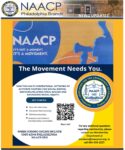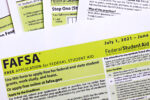By Denise Clay
An African American woman walks into a local emergency room, battling the kind of pain that would make big, professional football players cry.
Her joints are swollen, and walking is tougher than you can imagine. She barely makes it to the waiting room, where she is forced to wait for about five or six hours to be seen by a doctor. Once the doctor talks to her, she tells him that she’s had this pain before, and that the only thing that will work on it is a narcotic.
But the doctor is looking at her chart and doesn’t believe that her pain requires that kind of medicinal help.
Welcome to the Emergency Room existence of a person with Sickle Cell Disease.
This is just one of the issues that will be covered on Saturday when the Philadelphia/Delaware Valley Chapter of the Sickle Cell Disease Association of America holds its annual Sickle Cell Seminar at the International House, 3701 Chestnut St. Family members, doctors and patients living with Sickle Cell will be discussing new treatments and other issues during the day-long seminar.
Emergency Room Etiquette is one of the more pressing issues, said Zemoria Brandon, administrator and social worker for the Sickle Cell Association. Part of that stems from what doctors aren’t being taught in medical school about the disease.
“When you go into the ER, most of the time you’re dealing with residents, people who are just getting out of medical school,” she said. “Because of their training, they’re cautious about overmedicating. But there are certain kinds of pain that only narcotics can help. We have to teach patients to be their own advocates.”
This is the 100th Anniversary of the discovery of Sickle Cell, a disease that causes blood cells to form in a sickle shape. Because of their unusual shape, these blood cells sometimes congregate in the blood vessels, which can cause lung damage, strokes organ damage. About 10,000 Pennsylvanians are battling the disease, 2,000-2,500 here in Philadelphia, Brandon said.
But not all of them are battling it the same way, said Stanley Simpkins, executive director of the Sickle Cell Association.
“Two people can have Sickle Cell, but it can manifest itself differently,” he said. “The only common denominator is when they’re in crisis. It is an individual disease.”
Because of this, people battling Sickle Cell are treated in a variety of ways. Most treatments begin with intravenous fluids to get the blood moving through the blood stream and narcotics for the pain. Some may have to endure a blood transfusion and a bone marrow transplant can sometimes be used to help children with the disease, but the donor must be a blood relative. A drug called hydroxyurea, which stimulates the re-production of fetal hemoglobin, is something else that Sickle Cell sufferers are also given for treatment, Brandon said.
About 2.5 million Americans carry the Sickle Cell trait, which means that if they have children with someone else who also has the trait, there is a 25 percent chance that their children will contract Sickle Cell disease, Brandon said. While most of these patients are of African descent, Asians, Native Americans, Latinos and people from the Mediterranean can also contract Sickle Cell.
In addition to the seminar this Saturday, the 13th Annual Walter Brandon Sickle Cell Disease 5K Walkathon will be held at Belmont Avenue and North Concourse Drive in Fairmount Park on Sept. 25. Registration begins at 6:30 a.m. and the actual walk begins at 8:30.
If you are interested in participating in the walk-a-thon, or would like to attend Saturday’s seminar, please contact the Sickle Cell Association at 215-471-8686.














Leave a Comment